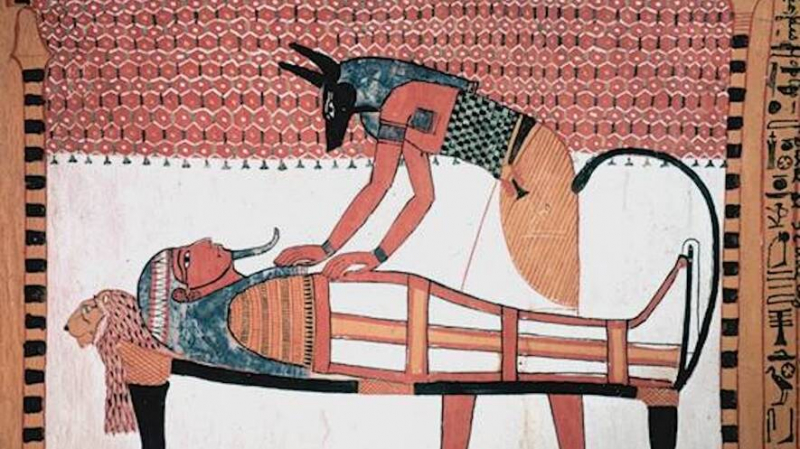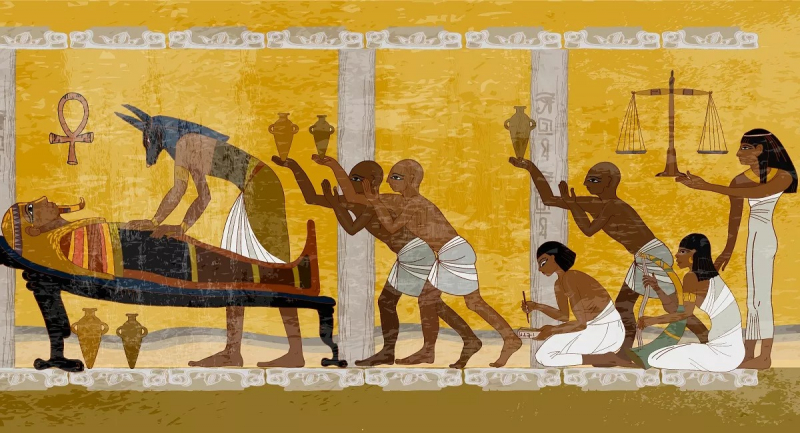Mummification
Mummification is an important part of the concept of the afterlife. A proper ritual must be followed to embalm a dead person to ensure that he or she comes back to life after receiving judgment from the Egyptian gods. Before the Old Kingdom (earliest Egyptian civilization), bodies buried in the desert were naturally preserved by desiccation. But as time went on, the wealthier Egyptians began to arrange for more elaborate artificial embalming. Therefore, Mummification deserves to be on the list of most famous ancient Egyptian paintings to keep for thousands of generations.
By the time of the New Kingdom, people had perfected the art of mummification. The best of these techniques takes nearly 70 days and involves preserving internal organs, including the brain, and dehumidifying the body in a salt mixture called natron. The corpse was brought to the embalmer, the masked Uba, the Egyptian god of mummification and the afterlife. The body was cleaned and removed from the liver, lungs, stomach, and intestines for separate embalming. Through the Mummification paintings, it can be seen that they used to put those parts in separate boxes called canopic jars. The brain was deemed useless and was removed from the skull with a metal hook. The heart that was once removed from the body was wrapped in linen and was once again replaced in the ribcage.











